
Multiple clipper systems will bring cold temperatures and enhance lake-effect snow downwind of the Great Lakes. An arctic blast will bring frigid temperatures accompanied with gusty winds that may lead to dangerous wind chills beginning in the Northern Plains Thursday before expanding to the South and East. An expansive winter storm will start Friday in the Southern Rockies/Plains and Mid-South. Read More >
Philadelphia/Mt Holly
Weather Forecast Office

Severe Weather Awareness Week in New Jersey and Pennsylvania
April 24th through April 30th, 2016
Tuesday April 26, 2015
This is the second of a five part series on severe weather safety which will run each day during New Jersey and Pennsylvania's severe weather awareness week.
Today we discuss what classifies a thunderstorm as severe, and what the differences are between a severe thunderstorm watch and a severe thunderstorm warning. We also give you information on what to do when a watch or warning is issued for your area.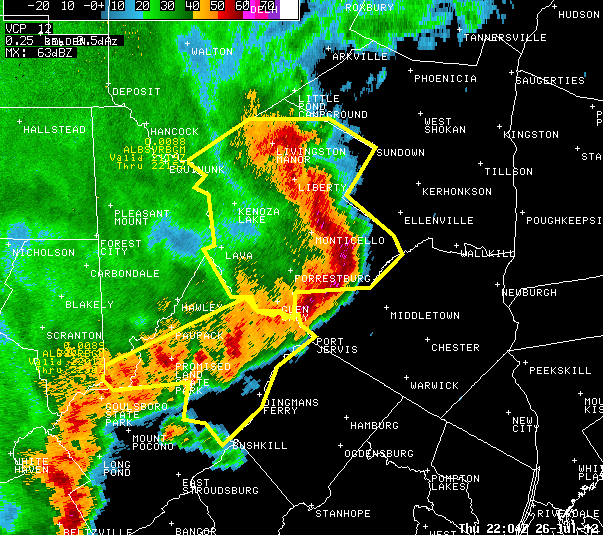
What is a severe thunderstorm?
A severe thunderstorm is any thunderstorm that produces wind gusts of 58 miles an hour or higher, and or hail one inch in diameter or larger. Those hailstones are about the width of a quarter. Severe thunderstorms are often accompanied by torrential downpours and frequent cloud to ground lightning. They occasionally produce tornadoes with little or no advance warning. Sometimes very strong winds in severe thunderstorms produce damage that people mistake for tornado damage.
What is a severe thunderstorm watch?
A severe thunderstorm watch means severe thunderstorms are possible in and close to the watch area. The watch is issued to alert you to the possibility that thunderstorms with damaging winds and large hail may develop. A watch does not mean severe weather is occurring. The national weather service's storm prediction center issues a watch for many counties and for several hours at a time.
What you should do when a severe thunderstorm watch is issued?
Go about your normal activities, but watch the sky around you for developing storms. Periodically check noaa weather radio, your mobile device or tv and radio stations for updates and possible warnings. Know which county you live in, and which ones border your community. If you are on vacation, or driving through an unfamiliar area, remember the name of the county you are in. Know where you are in relation to other towns or cities. Plan how to get to a safe place quickly if a warning is issued for your area, or if severe weather is observed.
What is a severe thunderstorm warning?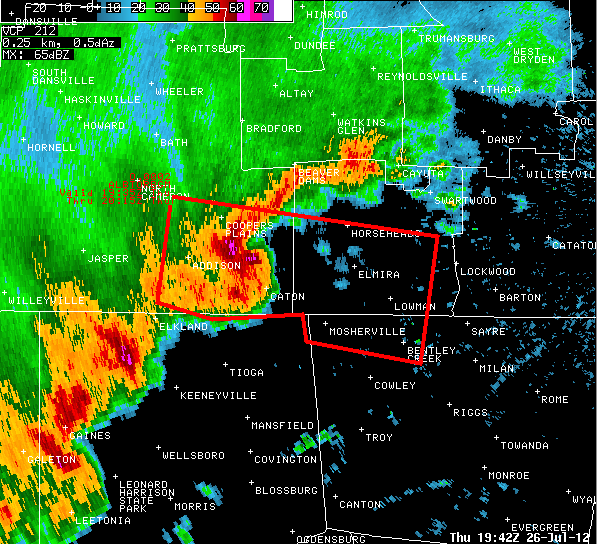
A severe thunderstorm warning means a severe thunderstorm is going to move through your county soon, so you need to take quick action to protect your life and property. Severe thunderstorm warnings are issued by the national weather service when doppler weather radar has detected a severe thunderstorm, or when one has been reported by skywarn severe weather spotters, county emergency officials, the police, or the public. Typically the warning is issued for one or two counties at a time for a period of up to one hour.
What to do when a severe thunderstorm warning is issued?
If you are outdoors, get inside your home, a strong building, or in your car. If there is no building nearby, your best protection is in a cave or ditch. Boaters should head to shore immediately.
When indoors, go to an interior room on the lowest level. Stay away from windows and doors. Do not use electrical appliances.
If you are driving, pull over to the side of the road until the storm passes. Heavy rain with any thunderstorm can flood roads quickly, so never try to drive through an area where water covers the road, even if you think it is shallow. This water may sweep your vehicle away.
|
Presentation: Severe Thunderstorms - PDF format.
|
The weather safety topics for the remainder of the week will be as follows:
Use the blue tabs at the top of the page move through each day.
US Dept of Commerce
National Oceanic and Atmospheric Administration
National Weather Service
Philadelphia/Mt Holly
732 Woodlane Rd.
Mount Holly, NJ 08060
609-261-6600
Comments? Questions? Please Contact Us.


 Coastal Flood
Coastal Flood Marine Forecasts
Marine Forecasts Text Products
Text Products Climate Information
Climate Information Skywarn
Skywarn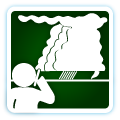 Submit Storm Report
Submit Storm Report Weather Event Archives
Weather Event Archives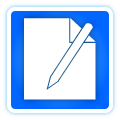 Forecast Discussion
Forecast Discussion Emergency Managers
Emergency Managers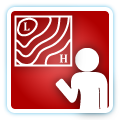 Briefing Page
Briefing Page